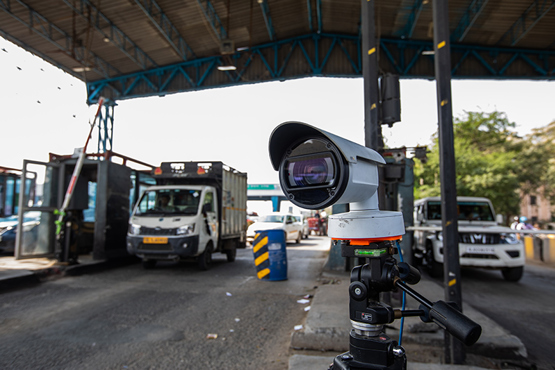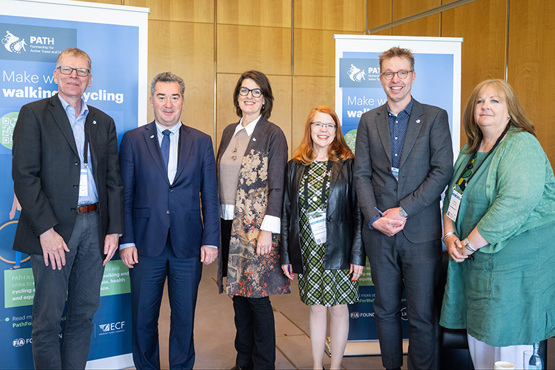New TRUE report: Delhi commercial and compressed natural gas vehicles are high real-world emitters

Commercial and compressed natural gas (CNG) vehicles are high real-world emitters, a new TRUE remote-sensing testing and report in the Delhi Capital Region (DCR) has revealed.
The Indian cities of Delhi and Gurugram have faced severe air pollution for decades, and road transport is recognised major contributor to the air quality crisis. To offer new insight into the NCR vehicle fleet, the TRUE Initiative conducted a remote testing campaign of real-world vehicle emissions and provided analysis to support evidence-based policymaking to improve air quality.
Over 110,000 vehicles were tested across 20 sites between December 2022 to April 2023. The tested fleet included two- and three-wheelers, private cars, taxis, light goods vehicles (LGVs), and buses. It also included a mix of petrol, CNG, and diesel vehicles.
Key findings of the report, 'Real-world motor vehicle exhaust emissions in Delhi and Gurugram using remote sensing', include:
- Vehicles produced to the newest emissions standard - Bharat Stage (BS) VI - show significant improvements in tailpipe emissions across all pollutants and vehicle types measured compared to BS IV. For example, real-world NOx emissions from private cars showed a reduction of 81% and buses nearly 95%.
- For many segments, however, the real-world emissions remain higher than lab limits, particularly for NOx. High-use commercial vehicle emissions are much higher than private vehicles, for example, BS VI taxi and LGVs emit 2.4 and 5.0 times more NOx emissions than their private car counterparts.
- CNG vehicles also exhibited high NOx emissions with Class II LGVs emitted up to 14 times their NOx type limit and taxis 4 times.
The CNG findings, which made up 32% of all tested vehicles, challenges the narrative of CNG as a 'clean' alternative fuel. Often considered a viable alternative or transitional step to zero-emission vehicles (ZEVs), many NCR cars are either factory-fitted or retrofitted from internal combustion engines to CNG.

"It is evident that real-world emissions from transport vehicles differ significantly from their laboratory values," says Amit Bhatt, India managing director at the International Council on Clean Transportation. "For the first time in India, we have collected significant emissions data from motor vehicles on the road and it is crucial to remember that what impacts our air quality is not the laboratory emissions, but the pollutants released by these vehicles when they are in operation. Therefore, it's time to reimagine our emissions testing regime and aggressively push for the adoption of zero-emission vehicles."
Sheila Watson, Deputy Director of the FIA Foundation, a TRUE Partner and the core founder, added: "This important research clearly shows India and the rest of the world that compressed natural gas is not the clean alternative fuel which was promised. While Delhi battles with dirty air, a visible killer hanging over the city, TRUE has shown that this less visible but still deadly fuel is not the answer. For health and for the climate, the solutions to dirty air are to switch to walking, cycling, and shared electric mobility."
For policymakers in the capital region, this new analysis could help guide the development of targeted policies to significantly reduce emissions. This could include the adoption of more stringent emission standards, including additional phases to BS VI or a jump to BS VII; the accelerated adoption of ZEVs through mandates or a phase-out scheme; and the deployment of remote sensing technology for real-world monitoring.
The release of this report is timely given the recent directive of the Supreme Court of India to finalize the Automotive Industry Standard (AIS) 170 and implement remote sensing in the National Capital Region. AIS 170 will set the required technical parameters for remote sensing devices and provide authorities with the proper resources to measure vehicles exhaust in real-time.
"Remote sensing as an on-road surveillance method can not only help identify and weed out the worst emitters, but also help understand emissions performance of different technologies and fuels. This shows that while the CNG transition has helped cut toxic particulate emissions from diesel vehicles during the early years, NOx emissions from on-road CNG vehicles without adequate controls can be high. This builds a case for the next big transition to electrification to make tailpipe emissions not cleaner but zero," added Anumita Roychowdhury Executive Director, Research and Advocacy, Centre for Science and Environment, India.
The testing and analysis was led by the International Council on Clean Transportation (ICCT) with core funding by the FIA Foundation, supported by Clean Air Fund (CAF), and was carried out in collaboration with the Delhi Transport Department, National Highways Authority of India and the Gurugram Administration.
To read the report and the accompanying factsheet, please click here.



